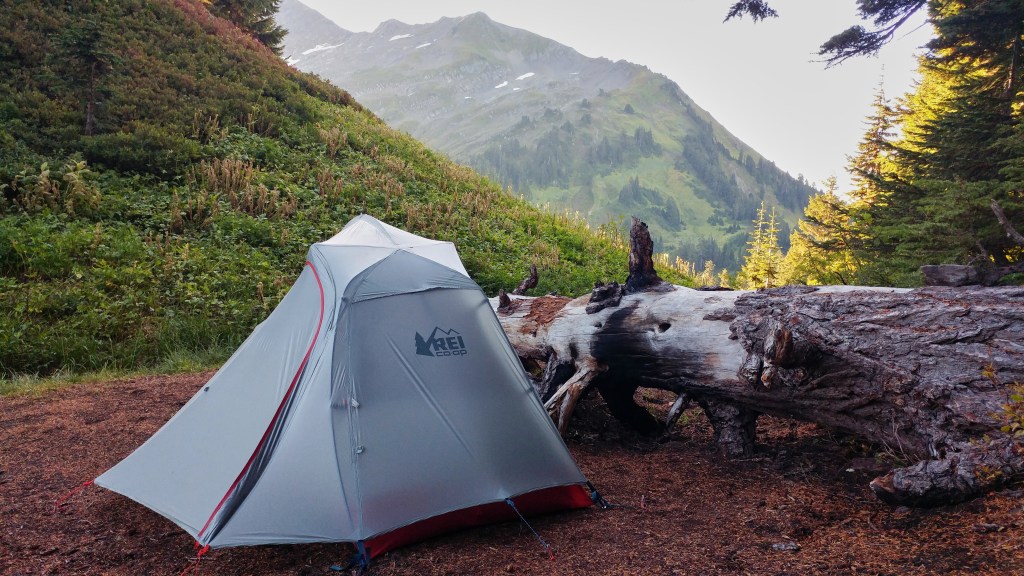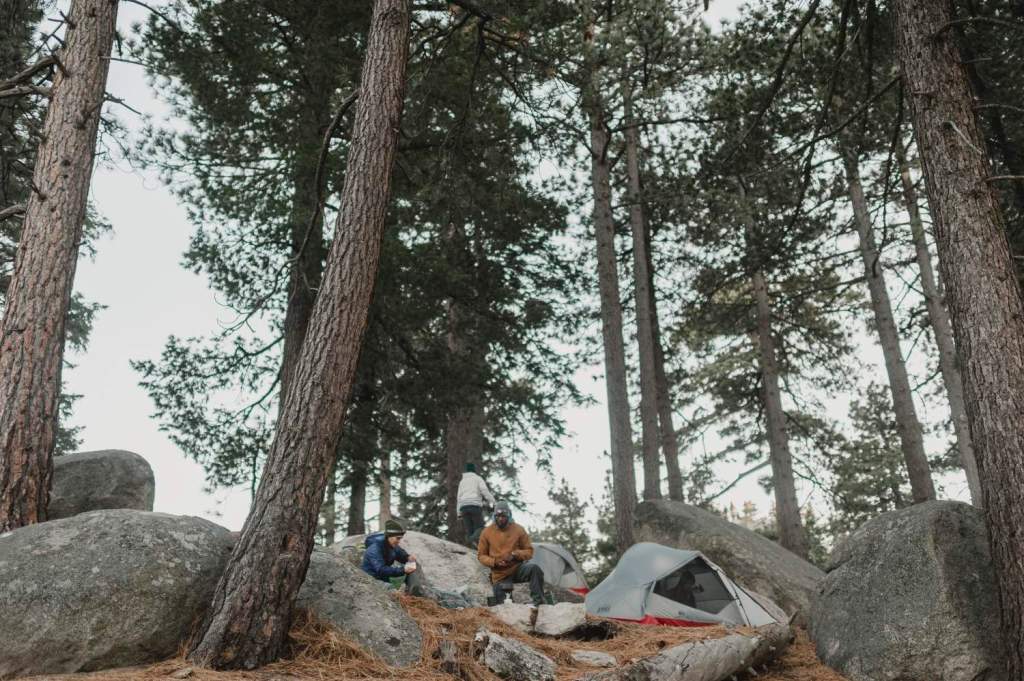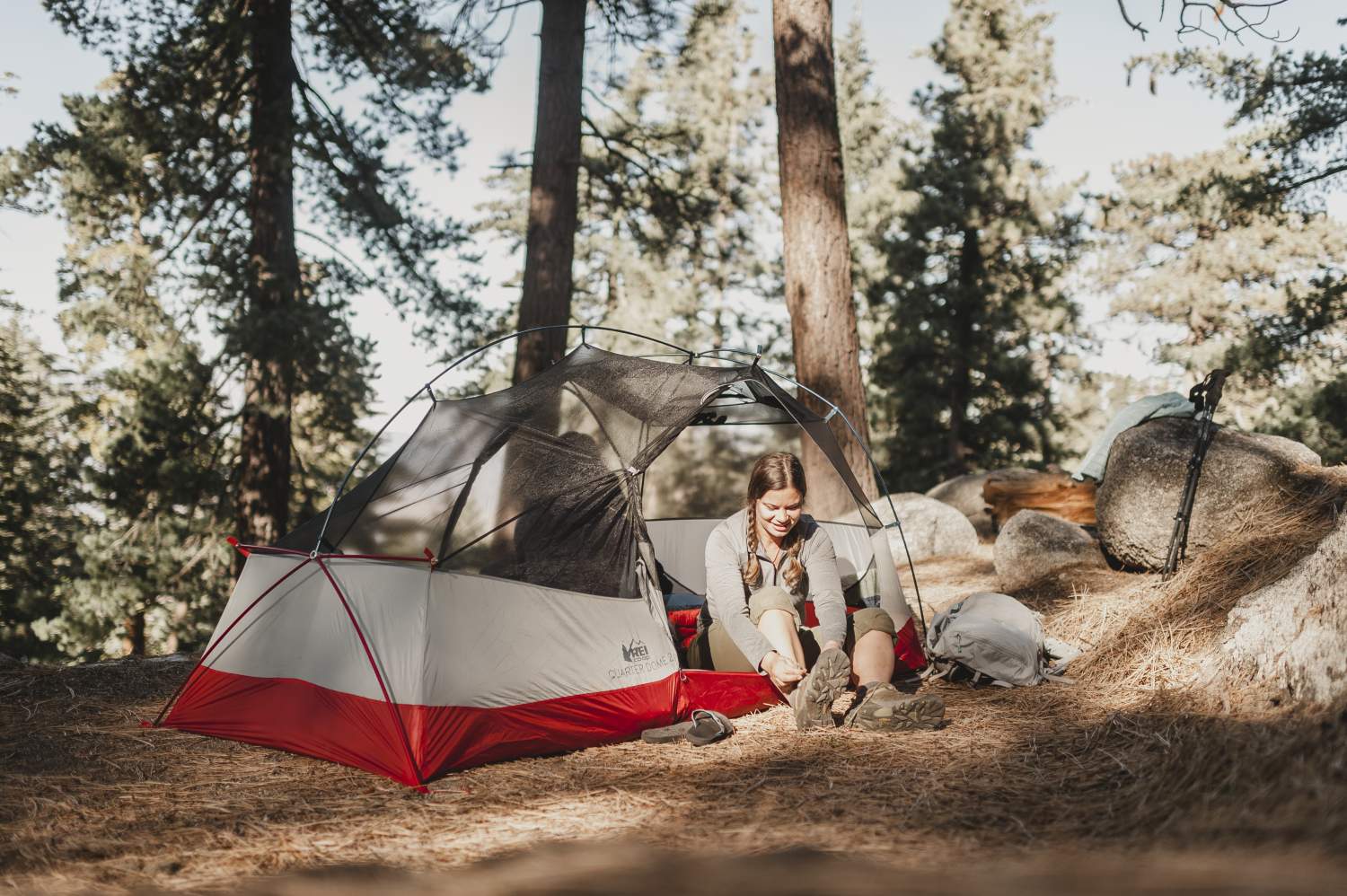With the upcoming release of the 2017 REI Quarter Dome tent, we interviewed the people behind the magic. Our designers took us back in time through the history of the Quarter Dome.
The Beginnings
To truly know the Quarter Dome, you have to know about David Mydans. A self-described dirtbag climbing bum with an art degree, Mydans shaped the way tents were designed at REI for over 30 years.
Mydans was the lead designer behind the first three versions of this tent. When asked how he came up with the design he told us, “Insight comes in a moment. You have this problem constantly ticking in the background of your mind. When the whole thing comes together, it comes together in a rush. You see it. Then you make it.”
He started with a mockup, taking a big piece of fabric and drawing out the floor plan. He put grommets where the poles should be set, cut shock-cord and pieced together the poles. From there, it was all about fine-tuning.
And so, in 2005, the Quarter Dome was born. Built of the same lightweight textiles as our all-season mountaineering tents but applied to an “X” pole structure, it was small and strong—made to withstand tough weather conditions, yet light enough to get a spot on every backpacking trip.
Version Two: Still Light, Yet Larger
The response to the Quarter Dome was overwhelming. Members loved it, but wanted more interior space, even at the cost of some structural strength. Born of this request was an even better tent. It also scooped up Backpacker magazine’s Editor’s Choice award in 2008.
The new pole design was totally unique. The design team placed one full-length pole between opposing corners and used two shorter poles that angled outwards. This created more shoulder and head space, which users loved. Two people could sit up, face each other and play cards.
The doors were unique too. The tear-drop shape allowed a door to zip almost entirely off and tuck away into a little pocket at the top. This combination of features blew away members, and the tent soon became recognizable across the public lands where it was seen in frequent use.
Version Three: Smaller, Lighter, Faster
In 2014 the REI design team was asked to lighten the load even more—chasing after the ultralight craze sweeping the backpacking community. The team fashioned an asymmetrical design, making the rear smaller than the front. To further save weight, the team chose a fabric even lighter than the last.
The tear-drop doors were changed to a half-moon sweep, with the fly door opening down the center of the vestibule. This was a direct response to customer reviews on the website—which we take seriously.

Version Four: Larger and Livable
To get the story of creating the latest version, we talked with divisional vice president of product design Nasahn Sheppard, lead designer Chris Pottinger, developer Shon Hancock and design insights researcher Adam Hockey.
The team was tasked with a seemingly impossible feat: to make the tent bigger without making it much heavier or more expensive. Sheppard challenged the team to take an iconic product and think differently: “We literally started with a blank piece of paper. We wanted to give ourselves the freedom to create a backpacking tent that defies the expectations of what a backpacking tent can be.”
The team began building a tent that increased livability in every conceivable direction. Designers opened up the vestibule, flipped the doors and supersized them, making a straight-shot entry and exit. The team also filmed people who had never set a tent up in their life—and then worked to create an intuitive design where the testers fumbled.
After a ground-up redesign, we got the first samples and flew REI store staff from around the country to headquarters to test them. The team looked for foul weather and found it—in Ancient Lakes, Washington.

The wind was strong enough to pull the tents out of the ground and roll them down the bluff. And, the architecture didn’t hold up. Pottinger and Hancock were quick to share, “Everyone survived the night,” adding, “some more comfortably than others.” But there were wins: the larger vestibules and increased headspace delighted the testers and the color-coded parts made it dead easy to set up.
After a redesign focusing on the foot section, the designers headed back to the wind-tunnel for further testing. Again, the tent architecture crumpled. Undaunted, designers reconfigured the pole set yet again. They left the tests with another version—built in that same flash of inspiration that Mydans described. It ended up being the tent as we have it today.
Hockey put together one last field test. The testers again sought out terrible weather, and this time the tent held up. Beautifully. A few tweaks later the new tent was ready to be launched.
This Quarter Dome can be described as delivering “lightweight livability.” Still an excellent backpacking tent, it has a roomy feel without a lot of extra weight.
“This is a revolution, not evolution, for the Quarter Dome. It is quite simply the best backpacking tent we’ve ever made,” Nasahn concluded. We sincerely believe our members will love this tent as much as we do.
